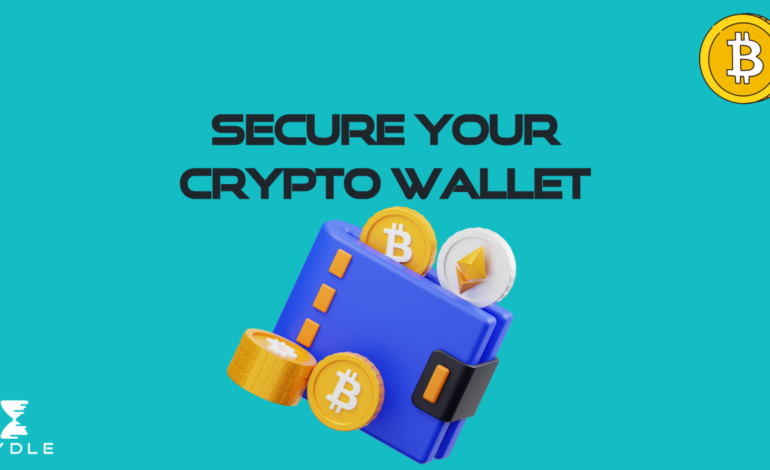How to Secure Your Crypto Account: Essential Tips for Safety

Learn how to secure your crypto account with essential tips and best practices. Discover strategies to protect your digital assets from hacks and scams.
How to Secure Your Crypto Account: Essential Tips for Safety
As the cryptocurrency market continues to grow, so do the risks associated with it. Securing your crypto account is crucial to protect your digital assets from hacks, scams, and unauthorized access. In this article, we’ll provide essential tips and best practices to help you safeguard your crypto account effectively.
1. Use Strong Passwords
A strong password is your first line of defense against unauthorized access.
- Tips for Creating Strong Passwords:
- Use a combination of uppercase and lowercase letters, numbers, and special characters.
- Avoid using easily guessable information like birthdays or common words.
- Use a unique password for each account.
- Impact: Strong passwords significantly reduce the risk of account breaches.
2. Enable Two-Factor Authentication (2FA)
Two-factor authentication adds an extra layer of security to your crypto account.
- How It Works:
- After entering your password, you’ll need to provide a second form of verification, such as a code sent to your phone or generated by an app.
- Recommended Tools:
- Google Authenticator.
- Authy.
- Impact: 2FA makes it much harder for attackers to gain access to your account, even if they have your password.

3. Use Hardware Wallets
Hardware wallets are physical devices that store your private keys offline, providing enhanced security.
- Popular Hardware Wallets:
- Ledger Nano S/X.
- Trezor.
- Impact: Hardware wallets protect your assets from online threats like hacking and phishing.
4. Be Cautious of Phishing Scams
Phishing scams are designed to trick you into revealing your private keys or login credentials.
- Common Tactics:
- Fake websites and emails that mimic legitimate platforms.
- Social engineering attacks.
- How to Avoid:
- Always verify the URL before entering your credentials.
- Be cautious of unsolicited emails and messages.
- Use bookmarks for frequently visited sites.
5. Keep Your Software Updated
Regularly updating your software ensures you have the latest security patches and features.
- Key Areas to Update:
- Wallet software.
- Operating system.
- Browser and plugins.
- Impact: Updated software reduces vulnerabilities and protects against known threats.
6. Backup Your Wallet
Backing up your wallet ensures you can recover your funds if you lose access to your device.
- How to Backup:
- Write down your recovery phrase and store it in a secure location.
- Use multiple backup methods (e.g., paper, encrypted USB drives).
- Impact: Backups provide a safety net in case of device loss or failure.
7. Use Secure Networks
Avoid accessing your crypto accounts over public or unsecured networks.
- Best Practices:
- Use a Virtual Private Network (VPN) for added security.
- Avoid using public Wi-Fi for crypto transactions.
- Impact: Secure networks protect your data from interception and unauthorized access.
8. Monitor Your Accounts Regularly
Regularly monitoring your accounts helps you detect and respond to suspicious activity promptly.
- Key Actions:
- Check transaction history for unauthorized activity.
- Set up alerts for account logins and transactions.
- Impact: Early detection of suspicious activity can prevent significant losses.
9. Educate Yourself
Staying informed about the latest security threats and best practices is crucial for protecting your crypto assets.
- Resources:
- Follow reputable crypto news websites and blogs.
- Participate in community forums and discussions.
- Impact: Knowledge empowers you to make informed decisions and avoid common pitfalls.
10. Use Multi-Signature Wallets
Multi-signature wallets require multiple approvals for transactions, adding an extra layer of security.
- How It Works:
- Transactions must be approved by a predefined number of private keys.
- Impact: Multi-signature wallets reduce the risk of unauthorized transactions and enhance security.
Conclusion
Securing your crypto account is essential to protect your digital assets from hacks, scams, and unauthorized access. By following these essential tips and best practices, you can significantly reduce the risks and ensure the safety of your investments. Stay vigilant, stay informed, and prioritize security to navigate the crypto space safely.








